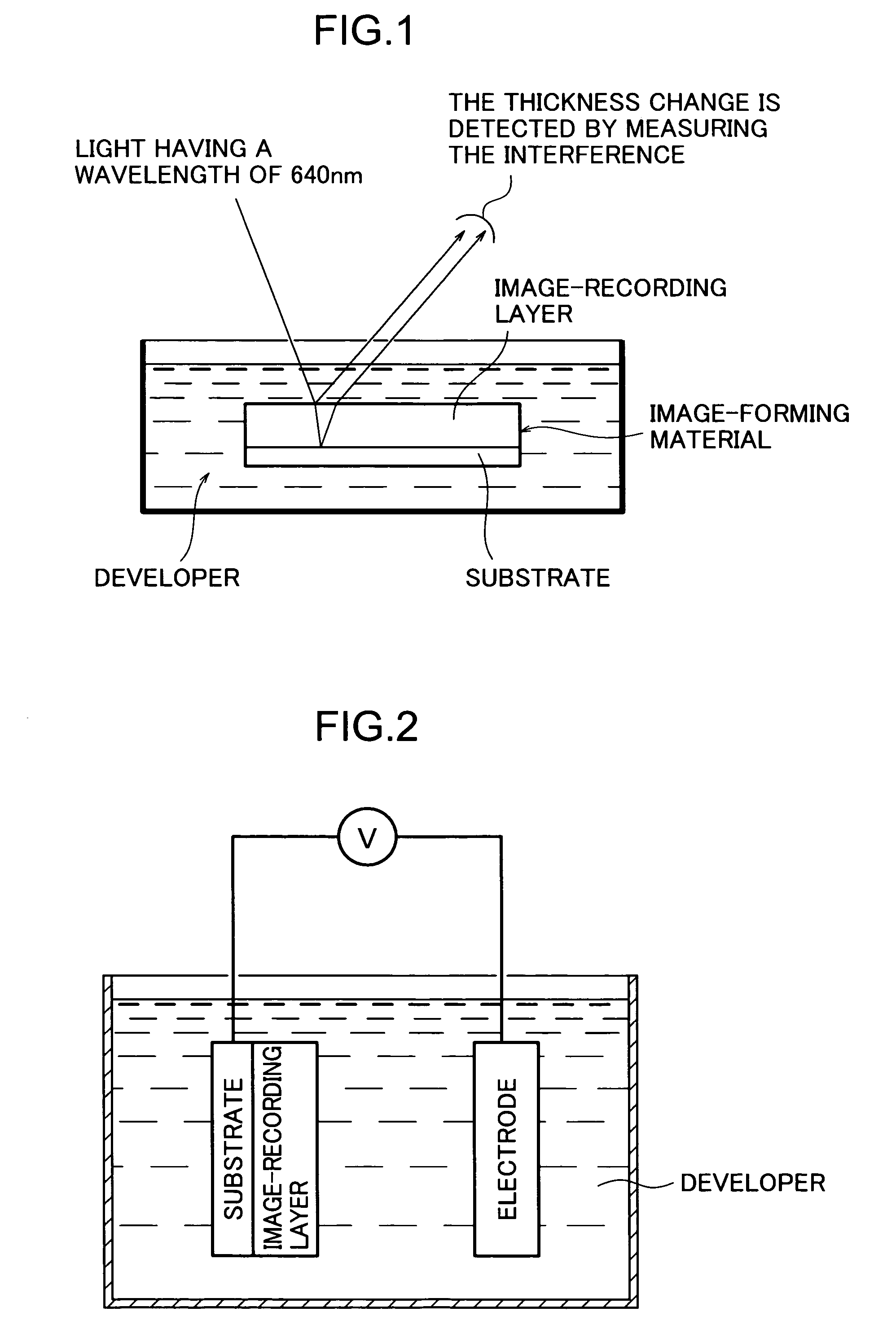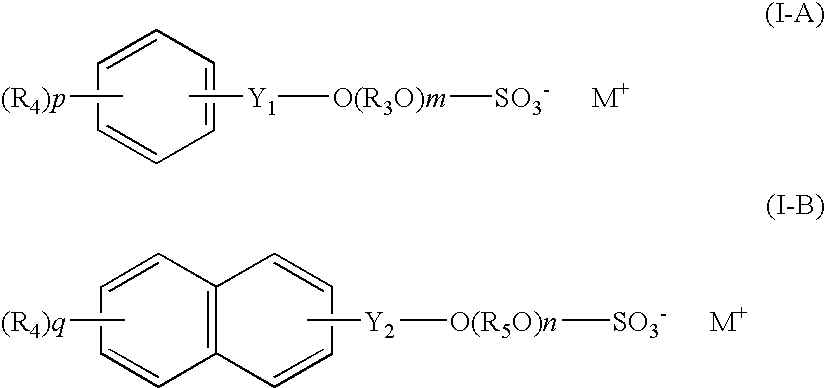Method for forming images
a technology of forming and images, applied in the field of forming images, can solve the problems of reducing the variation of the performance of the ps plate by the developer, and achieve the effects of improving the printing durability of the resulting printing plate, improving the developing ability, and being less susceptibl
- Summary
- Abstract
- Description
- Claims
- Application Information
AI Technical Summary
Benefits of technology
Problems solved by technology
Method used
Image
Examples
examples
[0146]The present invention will hereunder be described in more detail with reference to the following Examples, but it is a matter of course that the scope of the present invention is not restricted to these specific Examples at all. First of all, original plates (PS plates) for making lithographic printing plates (1) to (4) as image-forming materials were prepared according to the following procedures.
[Original Plate (1) for Lithographic Printing Plate]
[0147]A 1S aluminum plate having a thickness of 0.3 mm was sufficiently washed with water and then immersed in a 10% sodium hydroxide solution at 70° C. for 60 seconds for etching, followed by washing with running water, neutralization and washing with a 20% nitric acid solution and subsequent washing with water. The aluminum plate was then subjected to an electrolytic surface-roughening treatment in a 1.5% aqueous nitric acid solution, at the quantity of electricity at the anode time of 270 coulomb / dm2, using a sinusoidal alternati...
PUM
| Property | Measurement | Unit |
|---|---|---|
| absorption wavelength | aaaaa | aaaaa |
| temperature | aaaaa | aaaaa |
| molar ratio | aaaaa | aaaaa |
Abstract
Description
Claims
Application Information
 Login to View More
Login to View More - R&D
- Intellectual Property
- Life Sciences
- Materials
- Tech Scout
- Unparalleled Data Quality
- Higher Quality Content
- 60% Fewer Hallucinations
Browse by: Latest US Patents, China's latest patents, Technical Efficacy Thesaurus, Application Domain, Technology Topic, Popular Technical Reports.
© 2025 PatSnap. All rights reserved.Legal|Privacy policy|Modern Slavery Act Transparency Statement|Sitemap|About US| Contact US: help@patsnap.com



